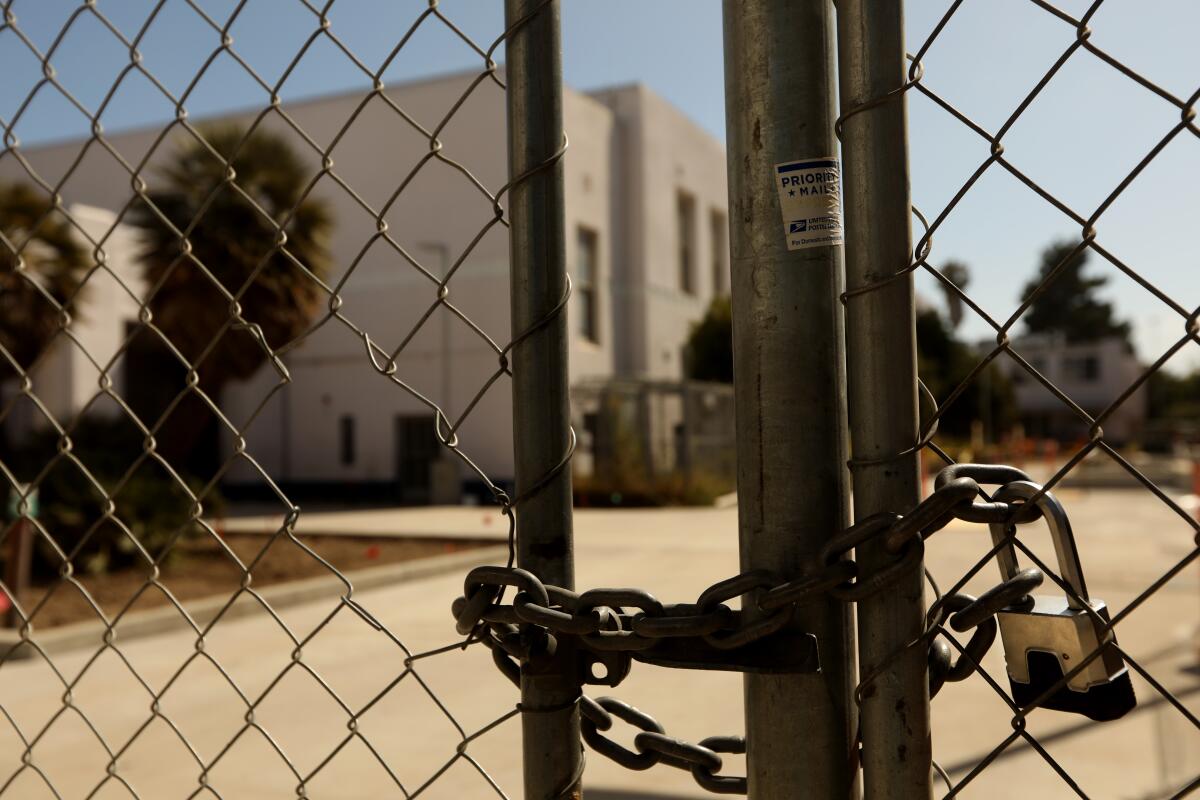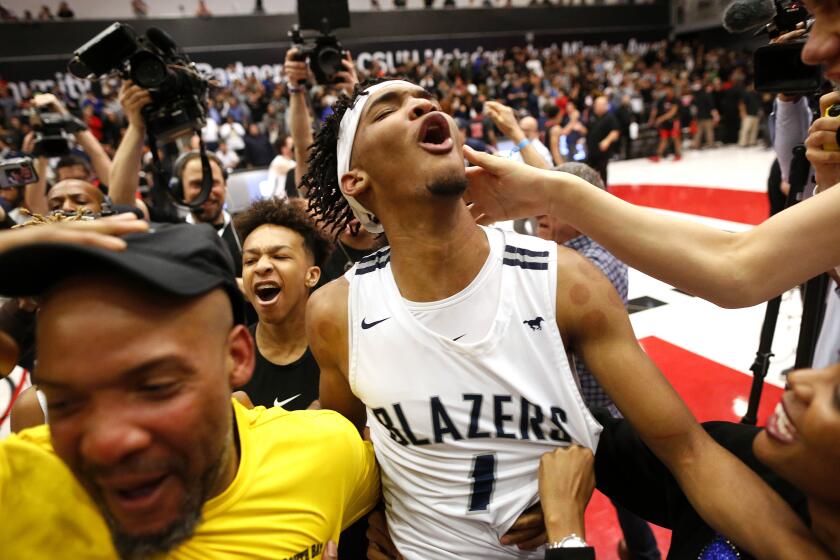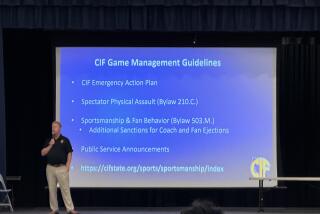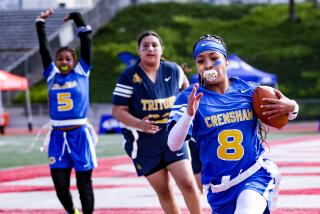Column: Starting high school sports seasons in January creates a new set of problems

- Share via
The high school sports season was supposed to officially begin the first week of August with football practice. It’s not happening. A surge in COVID-19 cases and continuing uncertainty over how schools in California intend to make campuses safe for students and athletes has left the California Interscholastic Federation with one option: delay the 2020-21 sports season until at least January.
The CIF, high school sports’ governing body in the state, is expected to announce a new sports calendar Monday, but coaches and administrators know what’s coming.
“I think with the recent spike, it just reaffirms any inclination our section [has in] wanting to move it back,” Moreno Valley Rancho Verde football coach Pete Duffy said. “By CIF holding off, it was a good move, and the best course of action seems to be moving back to late fall or early winter.”
It’s the only realistic option, considering high schools don’t have the resources that college and pro teams have in trying to create bubble environments through testing and controlled access to facilities. State sports organizations in other states, such as New Mexico and New Jersey, already have announced delays in their sports seasons.
There will be grumbling from parents concerned that their senior football-playing sons or volleyball-playing daughters could lose out on college scholarships to players from other states because the early signing week begins in December and recruiters won’t have new video from California athletes until January, just a month before the February signing day.
Several schools could lose football players who have plans to graduate early to join college programs, meaning they would miss out on their senior season. Football players could follow the lead of Newhall Hart quarterback Titus Tucker, who is moving to Alabama to continue his athletic career, and St. Monica quarterback Ethan Grady, who is moving to Colorado.
CIF data show a small increase in transfers year over year despite the coronavirus outbreak slowing down transfers during the spring.
The CIF has little choice. Its 10 section commissioners have been adamant that they would have only one chance to figure out a path forward and need to get it right. They are reluctant to try to start competition next month because of safety concerns and without confidence there will be enough schools ready to field teams.
Commissioners also don’t want a start-and-stop situation to develop, though even by waiting until 2021 there’s no guarantee that won’t happen in 2021. The Los Angeles County Department of Public Health recently told its 80 county school districts that no team sports are allowed without physical distancing.
The Los Angeles City Section is certain to delay any sports competition regardless of what the CIF decides. Sports facilities in the Los Angeles Unified School District have been closed since March 16, and Supt. Austin Beutner announced Monday that all campuses will be closed in the fall. Coaches haven’t been allowed to physically meet with athletes all summer. Students will start the school year Aug. 18 with remote learning.
Among the many challenges ahead if the season is delayed:
• How will small schools that rely on athletes who play multiple sports adapt to a compressed schedule that will see seasons overlapping?
• How will athletic directors figure out use of sports facilities that are crowded enough in an era when there’s no offseason?
• How will transportation issues be addressed when it comes to social distancing on buses for road games?
• How will locker rooms be made safe to use, or will they become obsolete until a vaccine is found?
• How will schools develop COVID-19 waivers for parents to sign to allow students to participate in sports?
Orange and San Bernardino counties advise high school teams to stop football camps and conditioning workouts because of the COVID-19 pandemic.
It was 101 years ago when the Spanish flu epidemic delayed the Southern Section championship football game until March 1919, when Fullerton defeated San Diego Coronado 18-0.
Coaches, parents and athletes should feel relief Monday to finally know a date when their seasons might begin. Revised practice plans can be developed. In the Southern Section, summer rules figure to be in effect this fall, which means programs can engage in activities they usually do in June and July, such as seven-on-seven passing competitions in October, winter baseball in November or weekend basketball tournaments in December — as long as school principals and health departments give approval.
Dave Griffiths, the athletic director at Big Bear who coached the football team for 21 years, is imagining what playing football in January might look like in the snow, with temperatures in the 20s and in a community that gains as many as 100,000 visitors to use its mountain slopes.
“It will be like trying to leave Los Angeles on a Friday night,” he said of the traffic. “A lot of heavy coats around the field. A lot of kids bundled up. Hand muffs. It will look a lot like parts of the country when you see Midwest teams playing in late December. You’ll be able to see a lot of breath coming out.”
Players who spend the weekend working at mountain resorts will need to revise their schedules. Vacationers, though, could encounter the rare opportunity to watch football in the morning and go skiing at night. What a sight that would be. Let’s all dream of the possibility. But it’s a slippery slope.
More to Read
Get our high school sports newsletter
Prep Rally is devoted to the SoCal high school sports experience, bringing you scores, stories and a behind-the-scenes look at what makes prep sports so popular.
You may occasionally receive promotional content from the Los Angeles Times.








